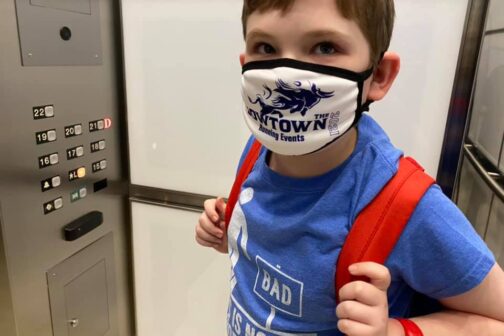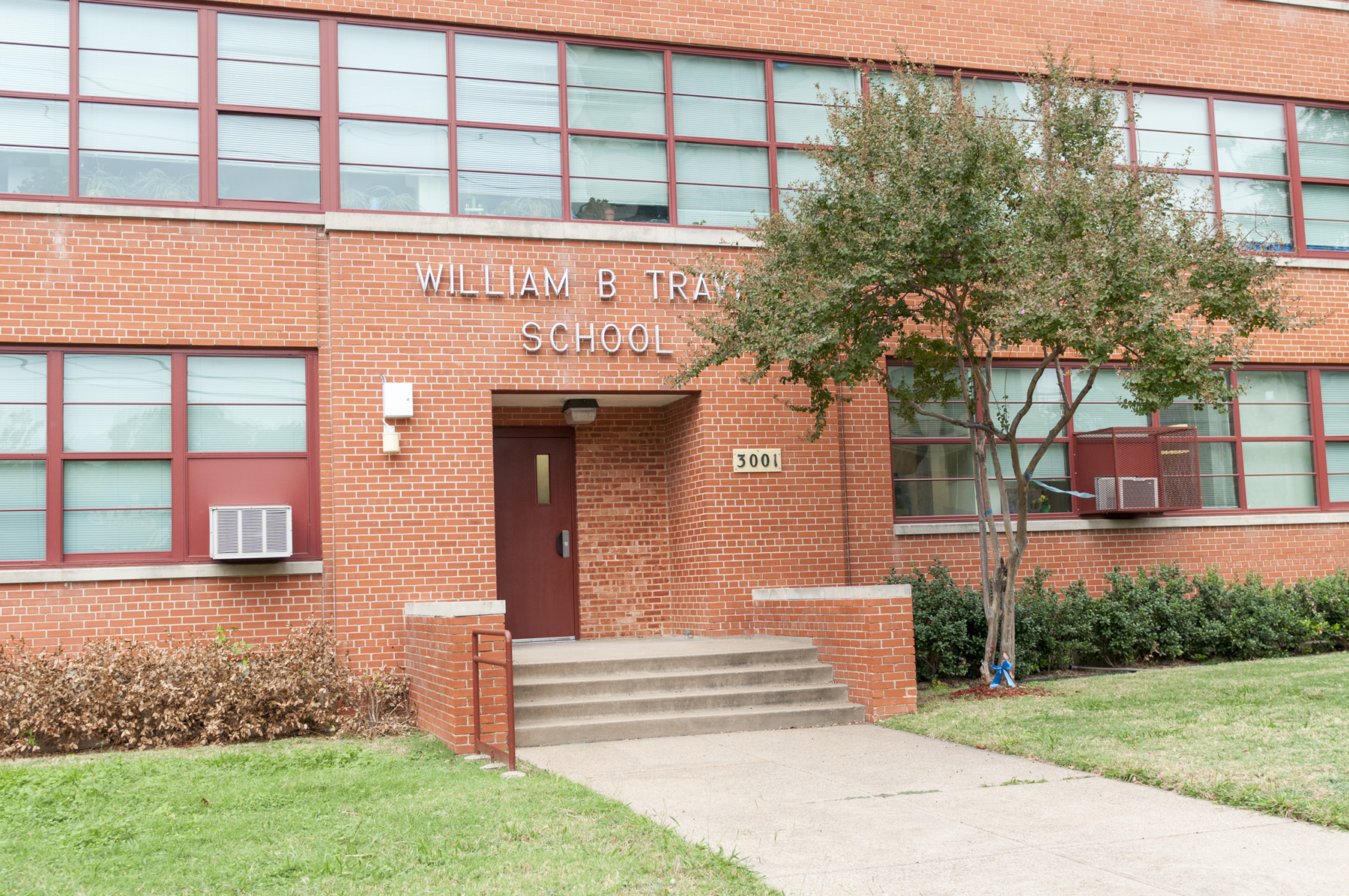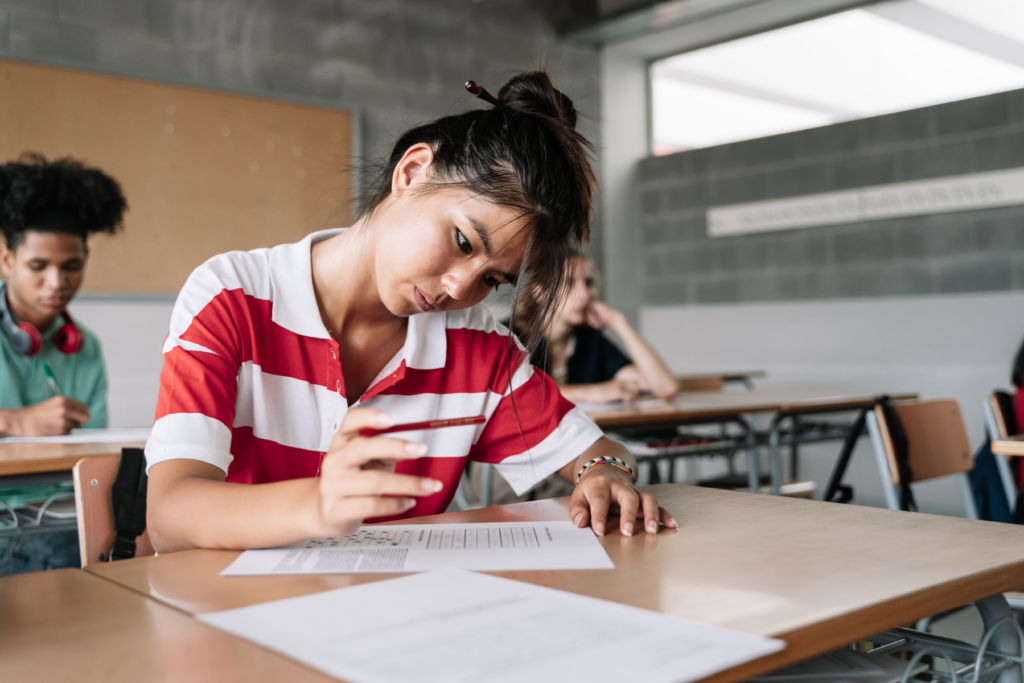This week, elementary school students in Dallas begin taking the State of Texas Assessments of Academic Readiness, or STAAR, test.
For many, like my fifth-grader, it’s for the very first time.
In third grade, just as students began preparing in earnest, everyone left for spring break and never came back, thanks to COVID-19. The state canceled the test that year and didn’t issue any school or district accountability ratings (which are based in part on STAAR results).
In fourth grade, we kept our son home all year. He is autistic. He does extremely well most days, and we’ve worked with him since he was four (with the help of a whole lot of professionals) to teach him how to advocate for himself.
When schools closed their doors two years ago, my husband and I knew that we’d likely be required to work from home. We gave the small human the choice — go back to school with his friends (but he’d need to wear a mask diligently and wash his hands well) or learn at home.
He thought about it for a good 24 hours, then came back to us.
“I don’t think I could concentrate if I was always worrying about what other kids might be sick and not know it,” he said. “I also think that if I can stay home because my mom and dad are home and can help me, I should, because other kids don’t have that, and so maybe that will mean they can spread out more and be safer.”
So the small human stayed home all last year. Between his dad, myself, and a tutor that came in three mornings a week, we were able to both work and keep our son on track.
Yes, I know the immense privilege in that statement, but as I watched my son’s teacher’s exhaustion quadruple over the year, I knew not having to teach remotely and in person at the same time, while keeping my son on task (did I mention he also has ADHD?), was probably a kindness.
When the state announced that the STAAR would be administered, but only on campus, in 2021, we opted (with his input) to keep him home. “Why would I go take a test at school during a pandemic?” he asked.
So this year will be the very first time he takes the test, which will be true for a lot of other kids in fifth grade, I imagine, whose parents didn’t send them up to school for the day to take the test last year as well.

This is also the first year since the pandemic started that the state will resume accountability rankings—the A-F scores that are designed to help the public understand how a school is faring. This year, A-C grades will be given, and schools and school districts scoring below a C will receive “not rated” labels, but their scores will still be available to the public.
Last year’s STAAR results were pretty awful, but here’s the thing—nobody really knows for sure what this year’s scores will look like. We have an idea, based on testing done throughout the year, and we know it won’t be great, but there are a lot of variables. We do know it will be worse than 2019, but could it be better than fall 2021? Or spring 2021?
It could be worse. It could be slightly better. A lot of kids who stayed home last year will be taking the test this year. That could make scores worse, or it could make them better because some of those kids were, like my son, ready to take the STAAR, but unwilling to go to school to take it. This was the first year that all students were on campus, but that doesn’t mean that all students started out on equal footing.
I spent last year with colleagues in the Education Writers Association researching and discussing how to write about teaching and learning during the pandemic. As we talked to experts, the overarching discussion was about how there was really no manual to figuring out what was 100-percent working, because this was a brand-new scenario.
Sure, we have some data on learning disruptions (the disruption from Hurricane Katrina, for instance), but it’s not comparable to the trajectory education has been on since school doors shut in March 2020.
But there are plenty of new studies that also somewhat shrug at what all this data we’re compiling means because there are so many things that just a score on a test won’t tell you.
One group of researchers said:
“This paper cannot capture ways that students learned that were not reflected on such assessments; we also cannot account for pandemic-related changes in students’ lives beyond schooling mode. We acknowledge the significant variation at the district level in terms of how districts chose to structure their virtual and hybrid learning approaches as well as students’ access to digital devices and the internet, which was particularly a challenge for virtual education in high-poverty schools. These schooling mode data cannot capture such variation nor can they provide a measure of instructional quality.”
The pandemic brought to light something nearly every teacher could have already told you—this city isn’t technologically equitable. Laptops and iPads were handed out almost immediately, but far too many students didn’t have access to high-speed internet. Hotspots were great, but not if you had more than one child who needed to be online.
Again, any teacher in Dallas ISD could have told you this even pre-pandemic, because some of their students only had the ability to work on some assignments while they were in school, where they had access to libraries, computers, and the internet.
And not every family could afford to have a parent stay home to make sure their child was online and paying attention, too. For one whole month last year, while Dallas ISD was fully remote at the beginning of the school year, I watched one of my son’s classmates attend class from her father’s cell phone, while he drove for Uber.
I watched other students log in and then (absent of any parental oversight) pull blankets over their heads and go back to sleep, or play video games while remaining on camera.
I also watched children struggle to be their own helpdesk when technology failed them.
All of that has resulted in a ton of variables. There are no real apples-to-apples comparisons when it comes to the educational experiences for students during the pandemic. There aren’t even apples-to-oranges comparisons. It’s more like apples-to-1981-Ford-Econoline-van.
We can’t really compare the scores from this month’s STAAR tests to 2019. Comparing it to last year is also difficult because some students were on campus, some weren’t, and teachers were teaching both remotely and in person at the same time.
Last year, during a school board meeting, Dallas ISD staff explained that Measures of Academic Progress (or MAP) test scores were actually not quite the bloodletting they had expected in fall 2020. But by mid-year, test scores fell. However, the beginning-of-the-year MAP test was given during the first month of school when every student was at home and some kids just didn’t take it. The ones who did were prepared for it. Students who weren’t able to log in to take it were back in class (and in person) for the mid-year assessment, and the inclusion of their scores meant scores fell because students who can’t log in to take a test are also generally students who can’t log in to learn, either.

So, when accountability ratings and STAAR results come out this summer, don’t panic.
Instead, the best gauge of progress might be to compare them to fall 2021 assessments and mid-year assessments from this year. Looking for progress within the year will likely give us a better idea of what still needs to be addressed when it comes to learning loss.
Are the STAAR scores we’ll be getting this summer going to be concerning? Absolutely. Does it mean that Dallas ISD is failing? Not at all. Every single district out there is experiencing some form of learning loss or unfinished learning because of the pandemic. It’s been a point of discussion among educators and education advocates for two years now.
What does matter is what we all learn from what those losses exposed, and how we answer that. I will never—not once—say that this pandemic was a good thing. But good can come from it, and that can start by seriously addressing the inequities inside and outside the schoolhouse.
One of the experts my EWA colleagues and I talked to said that this was both an exciting and terrifying time in education. Terrifying because there is so much to do. Exciting because, hopefully, it brings everyone to the table to holistically address longstanding issues that don’t just impact schools but the entire city.
As we were talking before he went to bed, I asked our fifth grader how he felt about the STAAR last night.
“I think it’s OK—we need to know how much we’ve learned and what we haven’t learned,” he told me. “But I also think it’s a little bit crazy to take a test for the first time and have it count for so much. I don’t mind the test, but I do mind how seriously grouchy everyone is about it.”
“Are you worried about how you’ll do?” I asked.
“I’m going to do my best, which is all anyone can do,” he said. “Tell the people who read your story that everyone should do their best to help kids learn. Ms. Taylor can’t do it all by herself.”
Yessir.
Author






